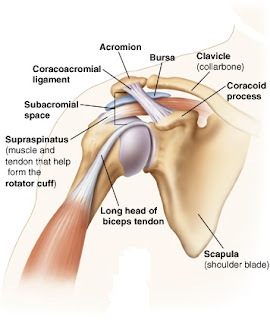Choosing between the two: Yoga or physiotherapy?
Many of us often wonder, what could be the best method that we can adapt in order to live a healthy lifestyle. We think of a number of ways to inherit physical activity in our daily routine. Whenever we discuss such issues with our family, friends and society everyone has their own opinions to offer. Some believe gym is the temple, where as some others go for dancing, or maybe boxing or martial arts on some higher levels. But the most common advice we get to receive these days is about yoga. Yoga is considered to be one of the best ways to keep your mind and body free from illness. There is one more scenario where people, particularly patients who are undergoing a physiotherapy treatment often ask about what is better to do while recovering and continue to keeping your body well in the long run, “yoga” or “physiotherapy”? Sometimes people don’t understand the difference between the two, “because physical activity is physical activity, no matter its yoga or physiotherapy”. And then the question arises, if there is a difference then what is it? Which one is better to go for? Well, we must shed some light on the topic as you will find a huge difference between the two when you know what actually both individually do for us.
Why should you choose yoga?
Yoga is a form of physical activity originated in ancient India, it is a group of physical, mental and spiritual practice which has shown effectiveness in treating several physical and mental health conditions. Yoga includes a meditative means of concentrating on the universal energies. It connects mind and body, helping an individual to understand the importance of recovery. There has been two components of yoga; 1. For mental peace by meditating. 2. for physical health by performing yoga postures that are a form of exercise. Yoga includes low impact activities to bring improvements in a sedentary lifestyle. These exercises helps in maintaining general health, building stamina, reducing stress and improving muscle flexibility.
When to choose physiotherapy?
Physiotherapy is a health care profession, which is based on rehabilitation. It deals with treating patients to overcome their physical disabilities and help them prevent further damage to the body by strengthening muscles and improving muscle extensibility. A physiotherapy treatment plan includes a variety of physical activities which is designed keeping in mind the condition of the patient and its prognosis. It is not a particular form of exercise but a combination of different forms of exercises which are chosen by the physiotherapist according to the patient’s level of disability. A treatment protocol is designed which helps the person who is physically ill, to recover and to eliminate the risk of worsening of condition. For example, the cobra pose in yoga which is also called as the back extension exercise is chosen for a patient who has a weak lower back muscles and eliminates the pain of sciatica. A physiotherapist can identify the anatomical and structural abnormalities causing pain and dysfunction and accordingly pick up the best possible exercises to cure the pain. So this is basically ‘purely therapeutic’ exercises which are ‘prescribed’ by the physiotherapist to the patient. A person in ICU may not perform yoga, a physiotherapist choose the best possible form of exercise which can be performed in such condition to restore body functions and help the patient to perform the exercise passively if needed.
Yoga can be added to your daily routine as a form of exercise once you have crossed the critical phase of illness to help you reduce the risk of further damage. Whereas to come out of that phase of disability to the phase of recovery you first need physiotherapy. There are some other forms of exercises also that can be chosen other than yoga for general health, like tai chi, plyometric, calisthenics or Pilates. Physiotherapy involves certain important components that will definitely help you analyze the difference between the two. There is gait training, balance training, pain management, use of prosthesis and orthotics, suspensions, joint mobilization, nerve stimulation, muscle stimulation, electrotherapy and a number of others which are included as a treatment method for patients.
There isn’t really a choice maybe!
I think now it becomes easy for you to distinguish between the two, as both yoga and physiotherapy are used in far different scenarios but are somehow related. There isn’t any need to ‘choose’ between the two because ‘yoga’ can be chosen but ‘physiotherapy’ is something that might become a need for you at some point of time when the illness is stubborn and you require some external aid to cure that.
It’s always good to choose a healthy way of living, as small changes can make a huge difference. Cure your illness the way your body really needs. Know more about what your body requires and let your inner self thank you later for it.
Take Care,
Jasrah Javed.



Comments